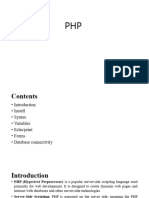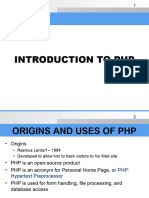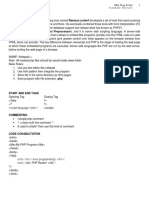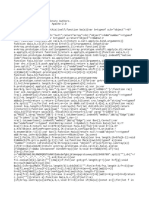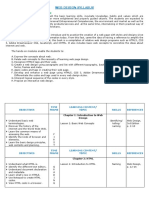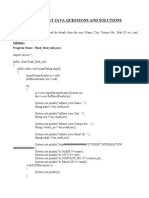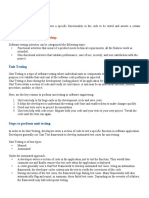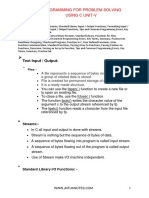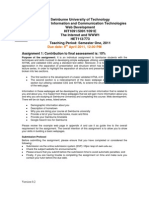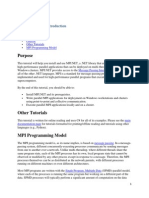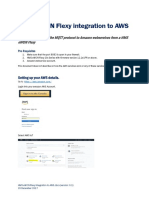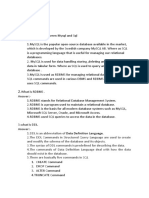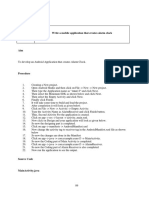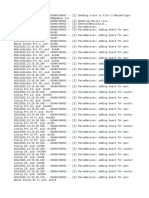0% found this document useful (0 votes)
16 views39 pages01.introduction To PHP, Setup, and Basics
This document provides an introduction to server-side programming using PHP, detailing its setup, basic syntax, and functionality. It covers HTTP requests, methods, data types, variables, constants, and the use of forms to send data to a PHP server. Additionally, it discusses the differences between static and dynamic websites and offers guidance on when to use GET versus POST methods for data transmission.
Uploaded by
Delvin AlvazriCopyright
© © All Rights Reserved
We take content rights seriously. If you suspect this is your content, claim it here.
Available Formats
Download as PPTX, PDF, TXT or read online on Scribd
0% found this document useful (0 votes)
16 views39 pages01.introduction To PHP, Setup, and Basics
This document provides an introduction to server-side programming using PHP, detailing its setup, basic syntax, and functionality. It covers HTTP requests, methods, data types, variables, constants, and the use of forms to send data to a PHP server. Additionally, it discusses the differences between static and dynamic websites and offers guidance on when to use GET versus POST methods for data transmission.
Uploaded by
Delvin AlvazriCopyright
© © All Rights Reserved
We take content rights seriously. If you suspect this is your content, claim it here.
Available Formats
Download as PPTX, PDF, TXT or read online on Scribd
/ 39



